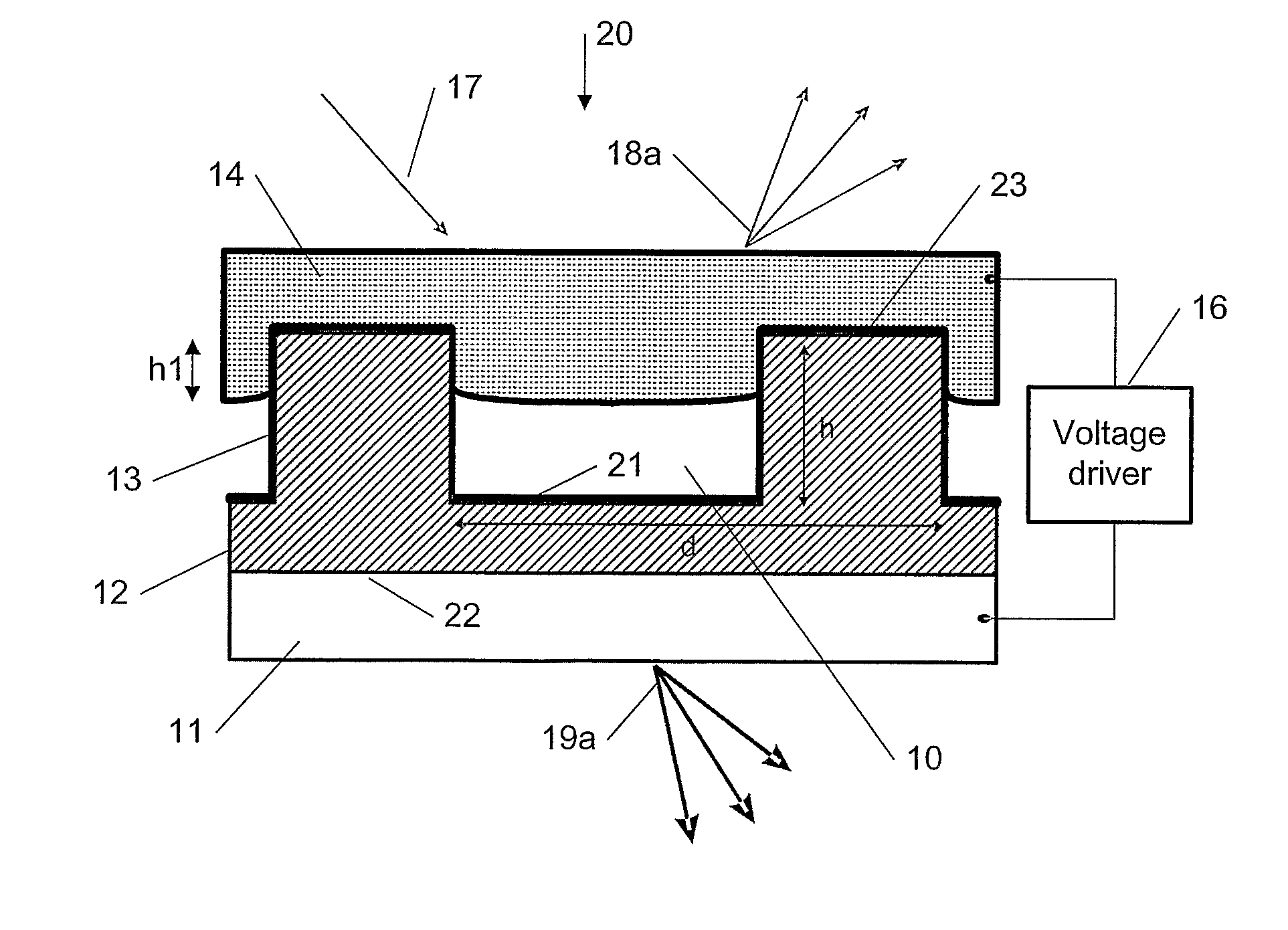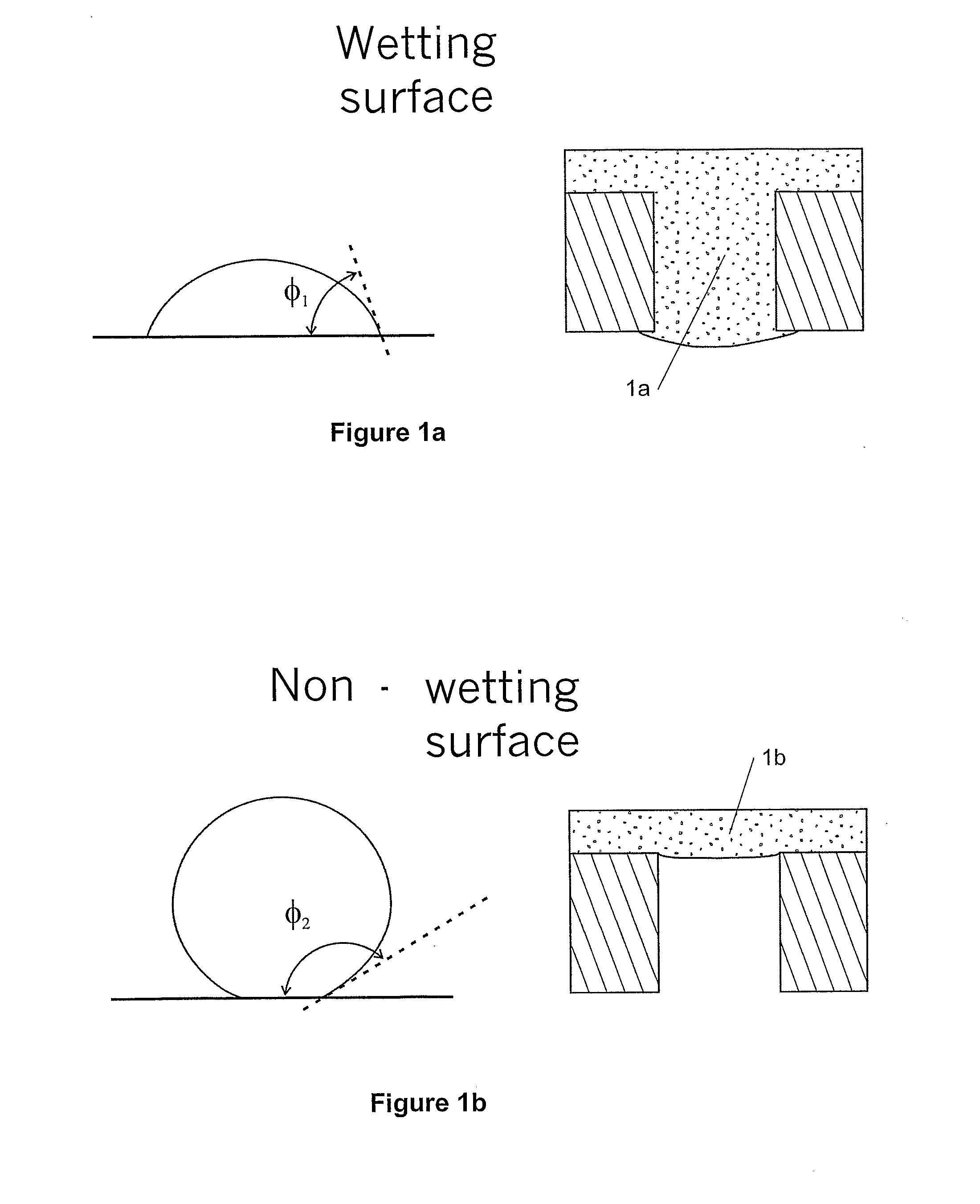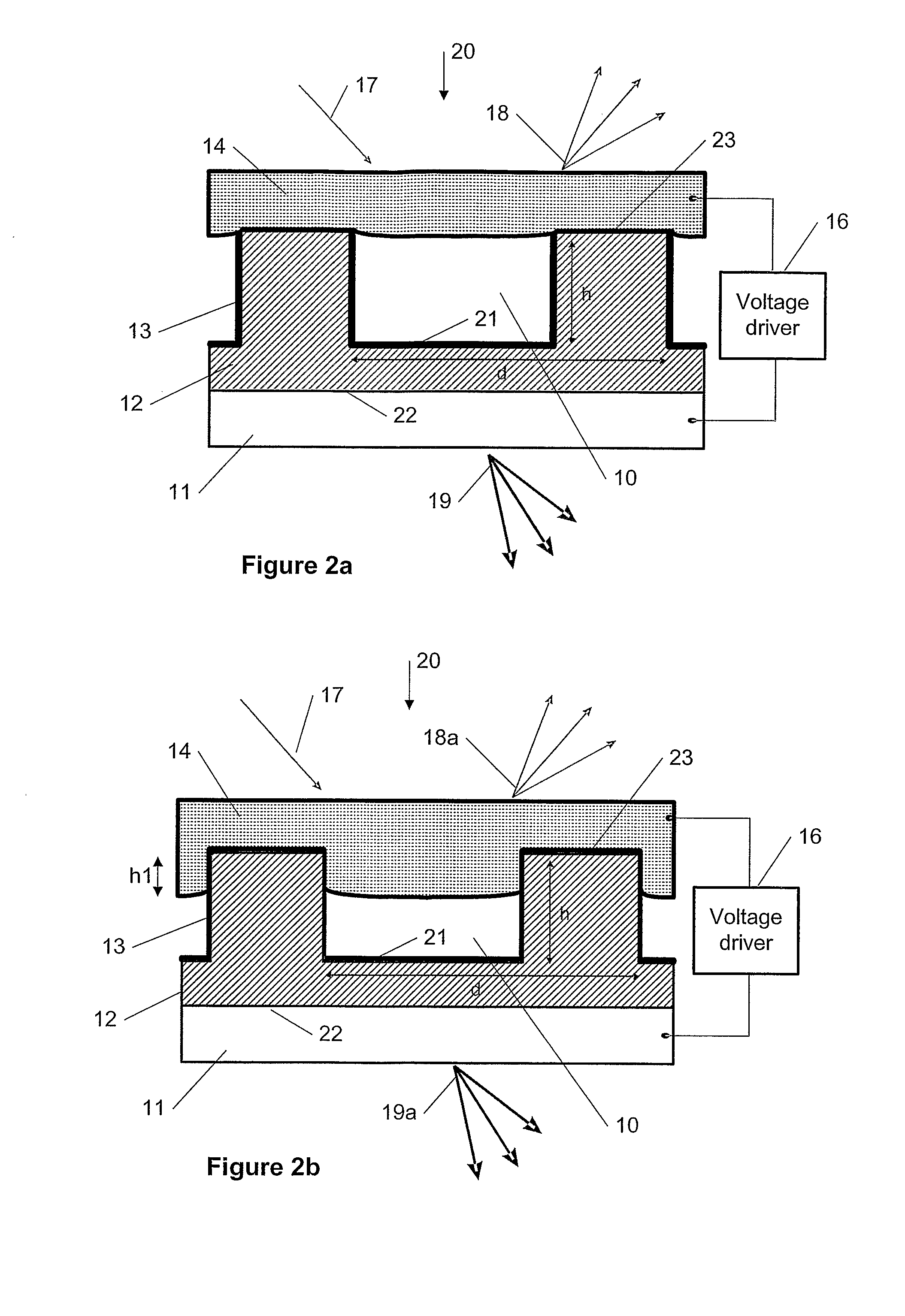Diffraction Gratings With Tunable Efficiency
- Summary
- Abstract
- Description
- Claims
- Application Information
AI Technical Summary
Benefits of technology
Problems solved by technology
Method used
Image
Examples
Embodiment Construction
[0046]A new method, apparatus and software product are presented for modulation of optical intensity using electro-wetting (EW) diffraction gratings in the electronic devices with an electrical control signal. The EW diffraction gratings can be components of an element (e.g., a display) of the electronic device. Embodiments of the present invention provide a technical solution for utilizing electro-wetting (EW) to implement variable efficiency diffraction gratings.
[0047]For example, one solution is a direct view color display with continuously tunable pixel intensities, e.g., using the EW diffraction grating as a colored pixel, which provides fast response time and refresh rate, as described below. Other applications may be projection displays, front illuminating displays, field sequential displays, auto-stereoscopic displays, etc. Also, applications in areas other than displays are possible as well which can include (but not be limited to) areas utilizing optical beam splitting and...
PUM
 Login to View More
Login to View More Abstract
Description
Claims
Application Information
 Login to View More
Login to View More - R&D
- Intellectual Property
- Life Sciences
- Materials
- Tech Scout
- Unparalleled Data Quality
- Higher Quality Content
- 60% Fewer Hallucinations
Browse by: Latest US Patents, China's latest patents, Technical Efficacy Thesaurus, Application Domain, Technology Topic, Popular Technical Reports.
© 2025 PatSnap. All rights reserved.Legal|Privacy policy|Modern Slavery Act Transparency Statement|Sitemap|About US| Contact US: help@patsnap.com



